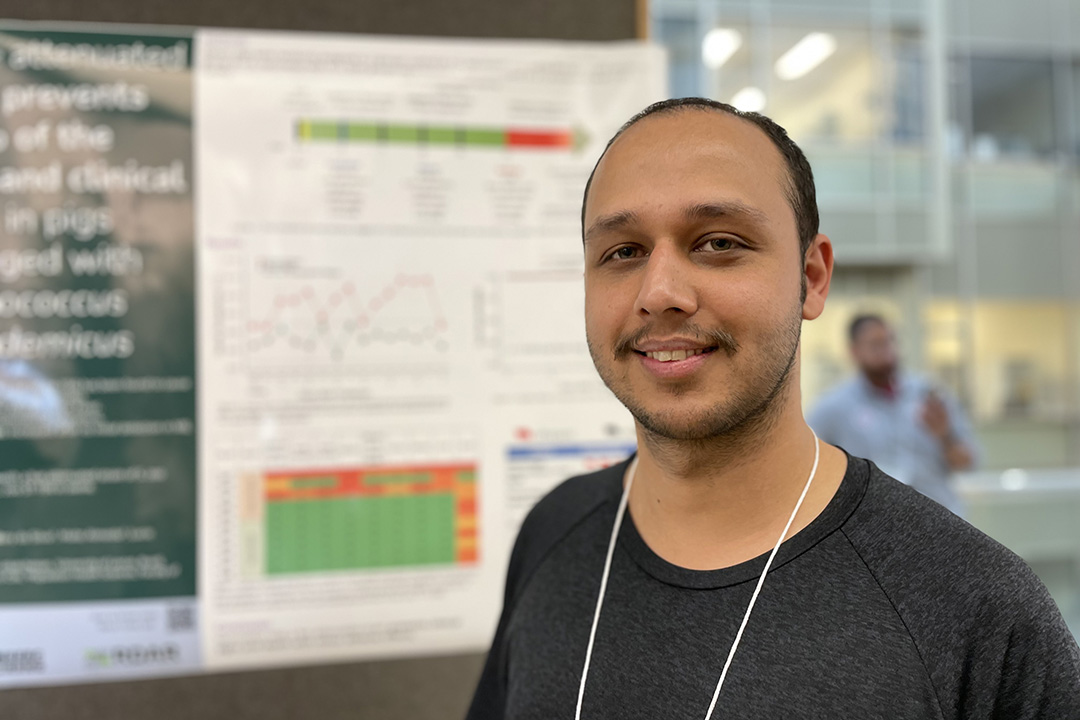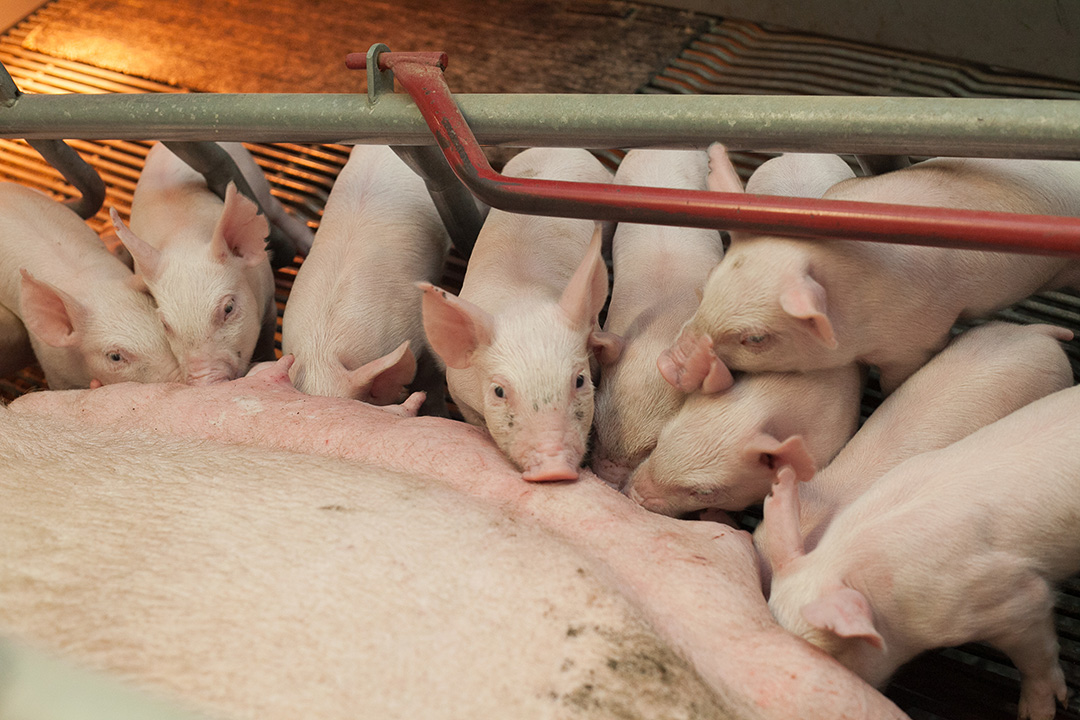
How low can pathogen’s infective dose go before pigs get sick?
An old infectious agent — usually considered harmless — is responsible for the sudden deaths of pigs in North America.
By Fernanda Luiza FacioliStreptococcus equi subspecies zooepidemicus (S. zooepidemicus) is a bacterium that researchers have considered to be a natural part of the pigs’ microbiome — the community of microorganisms in their bodies.
But since 2019, multiple reports associated this type of bacteria with disease outbreaks in swine barns that have led to abortions and sudden deaths of pigs.
What can researchers say about this emerging disease so far?
Dr. Sulove Koirala is a veterinarian and a master’s student at the Western College of Veterinary Medicine (WCVM) whose work is supervised by Dr. Matheus Costa, an assistant professor who specializes in swine health at the veterinary college. Koirala is also part of Costa’s research lab team whose members study the interaction between pigs and their pathogens — such as S. zooepidemicus — to better understand how the animals get sick.
Koirala’s research on S. zooepidemicus is striving to deepen the knowledge about the infection caused by this more aggressive type of bacteria, and his work has already resulted in some interesting data.
“On the last clinical trial, we observed mortality ranging from 75 to 100 per cent. The infected pigs die within 40 hours to four days of inoculation. However, some pigs recovered and continued spreading the bacteria,” says Koirala.
“We call these animals ‘persistently infected.’ So, our next goal is to identify how much time the persistently infected animals can transmit the disease.”
The research team also observed that the disease is “dose-dependent,” adds Koirala.
“The severity of the animal’s clinical signs depends on the amount of bacteria that the animal was exposed [to]. That means pigs exposed to high quantities of the pathogen [S. zooepidemicus] present intense fever and a quicker death compared to animals exposed to a lower dose.”

In the recorded outbreaks, the mortality rate was 30 to 50 per cent of the affected animals: “I believe the pigs in farm settings are exposed to small quantities (low-dose) of the bacteria,” says Koirala. In this regard, he emphasizes the team aims to detect what is called the “minimal infective dose” — the smallest quantity of a pathogen needed to cause a clinical illness.
Since the clinical signs of S. zooepidemicus disease are very similar to African swine fever (ASF), Koirala says researchers in Costa’s lab are looking for a way to distinguish both important swine diseases in situ (at the farm).
“However, for now we only can determine if it is ASF or S. zooepidemicus [by] doing tests in the laboratory.”
ASF is a highly contagious and deadly viral disease of pigs. Since no treatment or vaccine is available, the only way to stop ASF is to depopulate all exposed swine herds.
For Koirala and his colleagues, the ultimate goal for S. zooepidemicus research is to find more precise ways to detect and contain the disease. There’s no vaccine available for S. zooepidemicus infection, and veterinarians rarely apply methods of control or prevention since they are unknown given its emerging nature.
By learning more about S. zooepidemicus infection, they hope to find new ways to protect the health of pigs and to help swine producers maintain biosecurity in their barns.
“We still have a lot to learn. However, I want to highlight these points: it is a dose-dependent infection, it has a 30 to 50 per cent [rate] of mortality, but it also results in persistently infected animals and is very similar to ASF,” says Koirala.
The Natural Sciences and Engineering Research Council of Canada (NSERC), Results Driven Agriculture Research (RDAR) and the Saskatchewan Agriculture Development Fund are providing funding for this swine health study.
Fernanda Luiza Facioli of Barão de Cotegipe, Brazil, recently graduated from the veterinary program at the University of Passo Fundo. She worked as a summer research student at the Western College of Veterinary Medicine (WCVM) in 2022 and her story is part of a series of articles written by WCVM summer research students.
